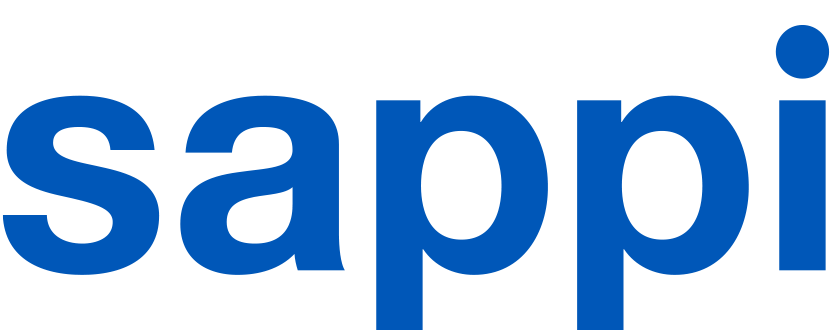
-
Products & Services
- Services
Education and support
 Education and supportCreative resources to learn more about paper, printing and everything in between.
Education and supportCreative resources to learn more about paper, printing and everything in between. -
Sustainability & Impact
Fresh Facts on Fresh Fibre
 Fresh Facts on Fresh FibreLearn how to choose between fresh and recycled fibre for your next project.
Fresh Facts on Fresh FibreLearn how to choose between fresh and recycled fibre for your next project.The Power of Trees
 The Power of TreesWhere the power of trees meets the strength of Sappi.
The Power of TreesWhere the power of trees meets the strength of Sappi.Product CoC Claim Options
 Product CoC Claim OptionsYou should be confident in your supplier’s approach to sustainability.
Product CoC Claim OptionsYou should be confident in your supplier’s approach to sustainability. -
Innovation & Collaboration
Sustainable alternatives to plastic
 Sustainable alternatives to plasticUsing cellulose and woodfibre from trees
Sustainable alternatives to plasticUsing cellulose and woodfibre from treesPartner with us
 Partner with usWorking with brands to develop sustainability solutions
Partner with usWorking with brands to develop sustainability solutions -
News
- Events
COVID-19 Resource centre
 COVID-19 Resource centreCentral Resource Centre for all COVID-19 info
COVID-19 Resource centreCentral Resource Centre for all COVID-19 info -
About us
Research and development
 Research and developmentWorking on tomorrow’s solutions.
Research and developmentWorking on tomorrow’s solutions.2023 Sappi Annual Integrated Report
 2023 Sappi Annual Integrated ReportContinually shaping our business.
2023 Sappi Annual Integrated ReportContinually shaping our business.

Last December, I had the pleasure of attending, and the privilege of speaking at, the Printing Industries Association’s (PIA) Annual Color Management Conference. This conference gathers thought leaders in color science and engineering as well as color software and hardware developers at every imaginable level to share information and new ideas about Color Management. It also brings together printers, pre-media/pre-press folks, production managers, print buyers, project managers and anyone who has responsibility for color accuracy, quality assurance and quality control, as well as advanced file preparation. I presented Bridging the Color Language Barrier. I kicked off the presentation in French and watched as an initially bewildered audience saw my first slide dissolve into the English translation—you’ll soon understand why.
Over many years the academic and scientific color communities have made extraordinary progress in the technology of color accuracy, profiling, calibration and multi-device color management. Significant advances have been made in ISO standards, guidelines and processes which have delivered advances on global levels. Unfortunately, the dissemination of the information in the graphic arts pyramid has stopped somewhere in the printer’s pre-press department and has rarely made its way to the content creator, production manager or print buyer. Invention and innovation are critical to the growth of any industry. But, the knowledge gained as a result must have both an academic life and a commercial one in order to fulfill its greater purpose. It’s like delivering information in French to an English-only speaking audience—it’s only meaningful if it’s communicated properly. In order for the academic and technological advances in color science to actually advance the industry, we must communicate and educate effectively—from idea to implementation and from top level to base level—touching all participants along the way. According to the Oxford English Dictionary, the noun “communication” refers to “imparting or exchanging of information or news” and originates from the late Middle English/Old French term comunicacion, from the verb communicare or 'to share.'¹ While information can freely be transmitted from a sender to recipients on a daily basis, effective communication requires a shared understanding by both sender and recipient to complete the message loop. As creative individuals, we have wonderful opportunities every day to educate, train and consult on many different levels both in our professional, as well as our private lives. But, to be truly effective, we must ensure that our communication is actually received and understood by our intended audience. Take the opportunity today to learn something new that will make you better at performing your job and consider how you might share that information with your peers or colleagues. Or dive right in to the learning and sharing pool and attend the Color Management Conference – December 6-9, 2014 (save the date because it’s not even online yet!) Does that make sense? ¹ “communication, n.” Oxford English Dictionary. OED Online. Oxford University Press. April 2014 www.oxforddictonaries.com For more information on color and color management, check out Sappi etc. for a few key resources: https://www.sappietc.com/article/behind-scenes-spotlight-color-theory-and-brightness https://www.sappietc.com/article/standard-managing-color https://www.sappietc.com/article/sd-warren-influence-paper-color-printing-0 For additional information on color management, download our Printer Tech Tips from Sappi etc: Intro to ICC profiles https://www.sappietc.com/article/printer-tech-tips%E2%80%94introduction-icc-profiles The Color Measurement Standard for the Graphic Arts https://www.sappietc.com/article/printer-tech-tips%E2%80%94-color-measurement-standard-graphic-arts The Color Viewing Standard for the Graphic Arts https://www.sappietc.com/article/printer-tech-tips%E2%80%94-color-viewing-standard-graphic-arts
Welcome to Sappi etc. Education. Training. Consulting. And more. Get industry perspectives and learn about Sappi’s programs for creatives, printers and marketers.
Click here to view the archive.











































































